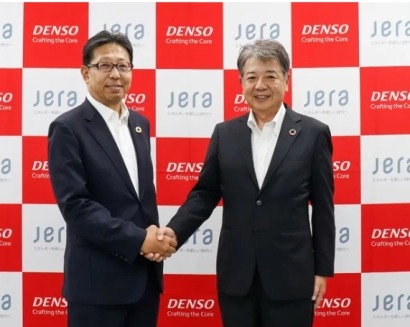
DENSO for years has pursued initiatives in the three areas of manufacturing, mobility products and energy use to achieve carbon neutrality by 2035. Notably, because hydrogen production will be essential in addressing energy use, the company is applying technology cultivated through the development of automotive systems to the development of the SOEC, which has the advantage of high stability and efficiency.
JERA, under its JERA Zero CO2 Emissions 2050 objective, is taking on the challenge of building a hydrogen and ammonia supply chain as part of its efforts to achieve net-zero CO2 emissions from its domestic and international operations by 2050. In thermal power, it is moving forward with the introduction of greener fuels as it pursues zero-emissions thermal that emits no CO2 during power generation.
Using an SOEC (Electrolyzing Power:(2) 200kW) developed by DENSO, the two companies will initiate a joint development focusing on high-efficiency hydrogen production technology utilizing waste heat. Beginning in FY 2025, DENSO and JERA will conduct a joint demonstration testing at a JERA thermal power station. Based on the outcomes of the 200kW joint demonstration test, the companies will aim to scale up the technology to a multi-thousand kW level by integrating multiple SOECs.
Through this joint development and joint demonstration testing, the companies will work toward the early establishment of a global supply chain for green hydrogen and ammonia and contribute to finding solutions for global decarbonization and energy issues.
(1) SOEC (Solid Oxide Electrolysis Cell): SOECs operate at high temperatures using a ceramic membrane as an electrolyte to electrolyze water vapor and produce hydrogen. While there are other methods for hydrogen production such as alkaline water electrolysis, which uses an alkaline liquid as the electrolyte, and PEM (Proton Exchange Membrane) water electrolysis, which uses a polymer membrane as the electrolyte, the SOEC has the feature of requiring less electrical energy for electrolysis compared to these methods.
(2) Electrolyzing Power: Electric power allocated to electrolyzing water.

